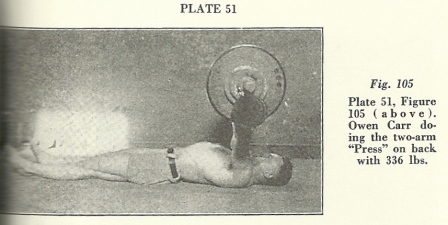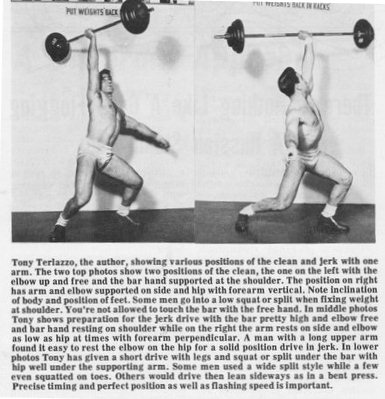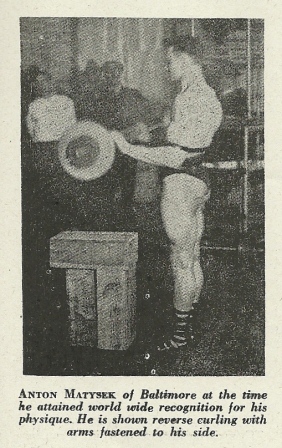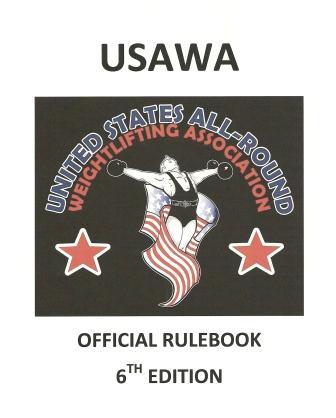Pullover and Press on Floor (Pullover and Press)
by Al Myers
The Pullover and Press is the “original” chest press with a bar. In the days before there were benches to lie on, if you wanted to chest press a weight you had to lay on the floor to do it. Thus, the exercise FLOOR PRESS got its name. The funny thing is that now Floor Presses are making a comeback in the weight game, and more lifters are including them in their training programs. I’m sure the oldtimers who remember getting that first bench in their gym to lay on while chest pressing are shaking their heads in disbelief! I’m sure they felt at the time like a big advancement had been made when getting that bench. No more getting down on the dirty floor to lift. Nice supports to hold the bar in place. Now with the comeback of the Floor Press it seems like a “step backwards!” Sorta like me wanting to go back to a flip-phone. But I digress. The topic of today is the Pullover and Press. That’s a Floor Press with the pullover added to get the bar to the chest. This lift even predates the Floor Press. This was done before lifters even had boxes to rest the plates on so they could crawl under the bar to press it. With the Pullover and Press, the bar & plates start on the platform and the lift ends when the bar and plates are back on the platform. A true original All Round Lift!!!
The IAWA Rules for this lift are:
B41 PULLOVER AND FLOOR PRESS
The rules for the pullover are the same as for the pullover and push (B43), except that the legs must stay flat, and must not be moved during the pullover so as to gain assistance. The lifter can choose the width of the legs position, but once elected they must remain in that position. With the bar at fore arms length and the elbows on the floor, the lifter must await the referees signal to press. The bar is pressed to arms length as per the bench press, and on completion the official will signal for the bar to be returned to the lifting surface. Note: when the lifter has pulled the bar over, movement of the upper arms is allowed whilst the lifter finds a better / stronger position, prior to the press.
Causes for Failure:
1. Failure to keep the legs flat and motionless during the lift.
2. All other causes for failure are the same as for the pullover and push
Now I know you are probably wondering why the IAWA name for this lift is different in the blog title than the rule description? Well, if you didn’t – I did. That’s just the way it is in the IAWA Rulebook. The name of this lift in the outline in the front on the IAWA Rulebook calls this lift the PULLOVER AND PRESS ON FLOOR, while deeper in the IAWA Rulebook where the rule is written, this lift is called the PULLOVER AND FLOOR PRESS. Not a big deal – but with as many all-round lifts that there are this just adds to the confusion. You would think the name of a lift would be consistent in the same Rulebook! The USAWA Rulebook calls this lift just the PULLOVER AND PRESS, but the good news here is that the content of the USAWA Rules and IAWA Rules are the same!!



